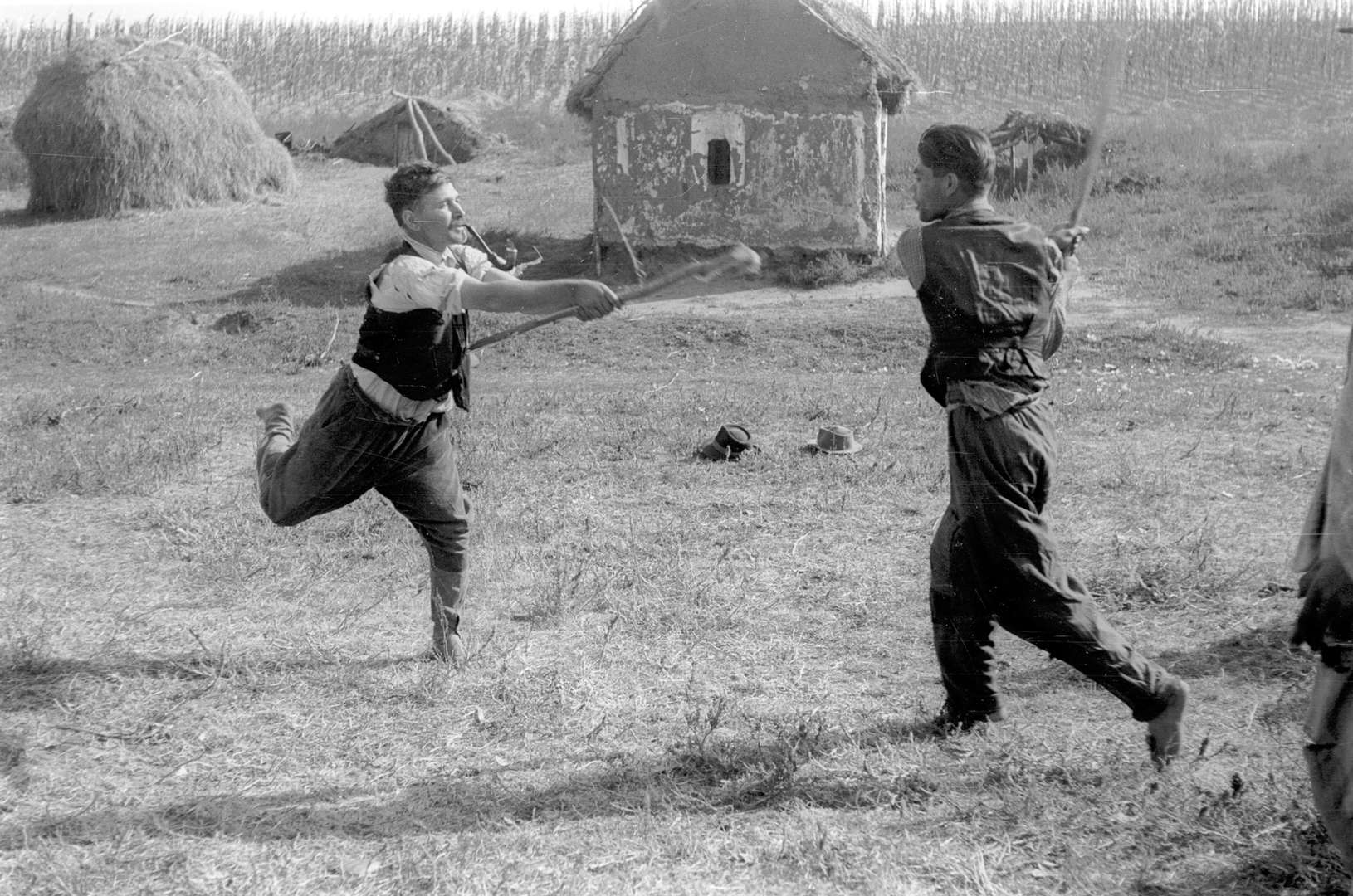Our primary vision for the ‘Dance’ section of the RomArchive is to reflect the multi-faceted traditions, innovations and influences of Romani dance around the globe. The section’s contents are not intended to provide a comprehensive account of Romani dance; rather, we have chosen to bring together small collections that not only allow the user to gain a deeper understanding of the various types of Romani dance but also serve as the starting point for further research. This section of the archive encompasses a wide range of materials, including digitised film and photographs, artworks, graphics, dance notation and texts as well as new materials created especially for the archive.
Curated by Isaac Blake


László Maácz | Botoló (Stick Dance) Tf.4963 | photography | Hungary | 1957 | dan_00075 Rights held by: László Maácz (artwork) / Research Centre for the Humanities – Hungarian Academy of Science (scan) | Licensed under: Rights of Use (scan) | Provided by: Research Centre for the Humanities – Hungarian Academy of Science (Budapest/Hungary)
Our approach to deciding on the contents of the ‘Dance’ section has been informed throughout by the concept of self-representation along with the need to deconstruct and expose the myths and stereotypes associated with the Romani community. Our carefully curated collections explore Romani dance at the local, national and international levels and the interconnections between those levels. Our subjects include the dances, the dancers, the dance companies and the dance festivals; and our manifold approach to sourcing materials has led to an account of the history of Romani dance largely through the eyes of Romani artists and dancers – one that underscores how the innate knowledge of the body and its movements is reflected in the various Romani dance styles.
The ‘Dance’ section has sought to enhance our understanding of Roma and their place in the world.
Romani performers – not least Romani dancers – have entertained and captivated audiences wherever they have travelled. We can trace the influences on Turkish, Russian and Spanish dance, among others. There are obvious commonalities between many of the dances still being performed today, including swirls, pronounced footwork and stomping, hip and shoulder movements and elaborate arm-work. But despite the strong influence of Romani dance, there has been scant detailed information until recently due to research focussing on the area, about the people involved and their work. That is most likely owing to long-standing, widespread discrimination as well as the dual phenomena of assimilation and annihilation, which have contributed to the virtual absence of Roma from national cultural narratives.
Owing to the ongoing threats to the cultural identity and heritage of their community, many Romani artists and performers may have continued to refrain from publicly identifying themselves as Roma. The resulting cultural isolation presents more challenges to researching Romani culture and archiving relevant works, people and materials. The ‘Dance’ section of the RomArchive has sought to overcome such challenges and thereby reveal the wealth of personalities, performances and materials from the past and the present as well as enhance our understanding of Roma and their place in the world.
Rights held by: Rosamaria E. Kostic Cisneros | Licensed by: Rosamaria E. Kostic Cisneros | Licensed under: CC-BY-NC 3.0 Germany | Provided by: RomArchive



